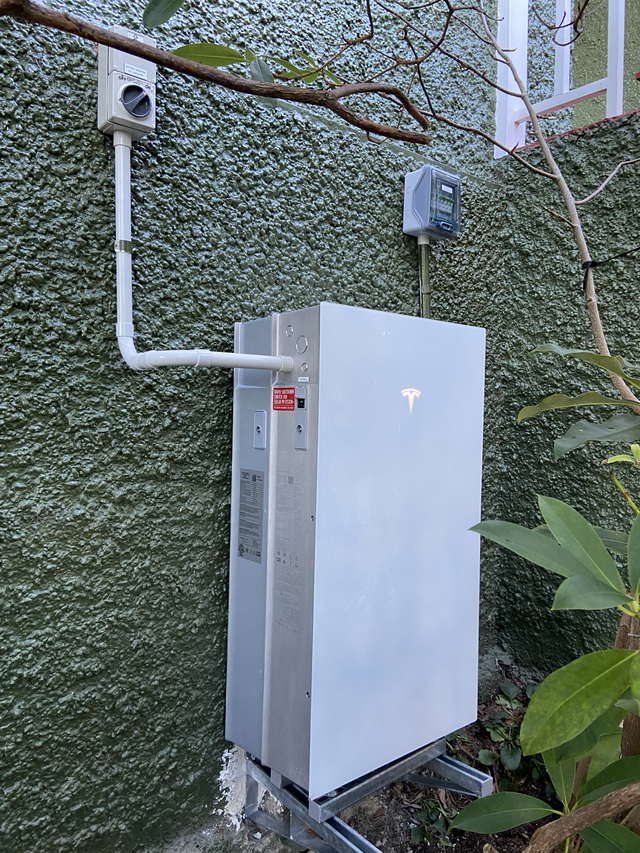Solar + Battery Troubleshooting During A Power Outage
Your solar + battery system is designed to protect itself during grid outages. If your system isn’t working as expected during a storm or power outage, use the steps below to understand what’s happening and how to fix it.
1. Battery Is Full And Solar Has Stopped Producing
What’s happening: When the grid is down, many batteries may already be at 100% charge, either due to Tesla’s Storm Watch feature or because solar has fully charged them. At that point, solar production pauses because there’s nowhere for the extra energy to go, and the system stops to protect itself.
What to do:
-
No action needed—this is normal.
-
Once your battery discharges to around 70–80%, solar production will automatically restart.
-
Avoid unnecessary loads during this time to let your battery discharge naturally and restart solar sooner.
2. Battery Reached Low Charge And Shut Off
What’s happening: During a storm or power outage, by the end of the day many systems may discharge to around 5%. At this point, the battery will automatically shut off to protect it from fully draining. When solar production resumes, the battery will restart automatically. However, heavy loads such as ovens, hot water, or heat pumps can drain the small remaining charge immediately, causing the system to shut down again. Once the battery is completely depleted, your system will not restart until grid power is resumed.
What to do:
-
Turn off all major electrical loads (ovens, heat pumps,
-
Keep only essential loads like lights and fridge on.
-
Turn larger loads back on once the battery has recharged to around 20–30% and solar production is underway.
3. Battery System Isn’t Recharging After The Outage
What’s happening: Some battery systems require a manual restart or recharge after a full shutdown.
What to do:
Fronius / BYD / Reserva:
-
These systems may not automatically recharge after a full shutdown.
-
Manually initiate the “charge battery” function via your app or inverter menu.
-
Contact your local branch if you’re unsure how to do this.
Tesla Powerwall:
-
Automatically restarts and manages itself.
-
Check the Tesla app to confirm Storm Watch or grid status.
Tip: After initiating a manual recharge, leave high-demand appliances off until the battery reaches 20–30% and solar production is underway.
4. Solar-Only System Turned Off Completely
What’s happening: Solar-only systems (no battery) automatically shut down when the grid goes out. This is a required safety feature designed to protect utility workers and your system.
What to do:
-
No action is required. Wait until grid power is restored and your system will restart automatically.
Tip: Consider adding a battery to your system to keep your home powered during the next outage.
Tesla Powerwall – Storm Watch Feature
What it does: Automatically charges your battery to 100% ahead of forecasted storms or outages. Ensures your home has maximum backup power if the grid goes down.
What you need to do:
-
Usually nothing—Storm Watch works automatically.
-
Check the Tesla app to confirm Storm Watch is enabled and monitor battery charge.
Tip: Even with Storm Watch active, avoid running heavy appliances during an outage to make your backup power last longer.
Other batteries (Fronius, BYD, Reserva):
-
During storms, you may need to manually initiate a charge to keep batteries fully ready.
Still Having Trouble?
Storms can create unexpected system behaviour. If you’re unsure, notice warning lights, or your system isn’t responding as described above, please reach out to your local branch for support. Our team is happy to help you troubleshoot and get your system back online safely.
You Might Also Like
Here are some other articles you might find interesting.
Is A Tesla Powerwall 3 Expansion Pack Right For You?
Thinking about installing a Tesla Powerwall 3? The DC expansion pack can be worth it for many homes. Doubling your storage boosts control over energy use, increases savings potential and improves resilience during outages.
Tesla Powerwall 3 Rebate: Get Up To $1,700 Back
Earn a rebate of up to $1,700 when you order and install a Powerwall 3 or Powerwall 3 Expansion for a limited time. This is the best price yet on Tesla’s latest home battery system.
Prepare Your Solar System For The Next Power Outage
Prepare your solar or solar system for an emergency such as a storm, earthquake or unexpected power outage.
Tesla Powerwall 2 Lockout: Keeping Your System Safe & Reliable
Learn about the Tesla Powerwall 2 lockout, why some units were powered down, and how affected customers get a free Powerwall 3 upgrade in NZ.
Contact Us
Feel free to contact us for questions, partnerships, or just to drop a friendly hello! We’re excited to connect with you!










